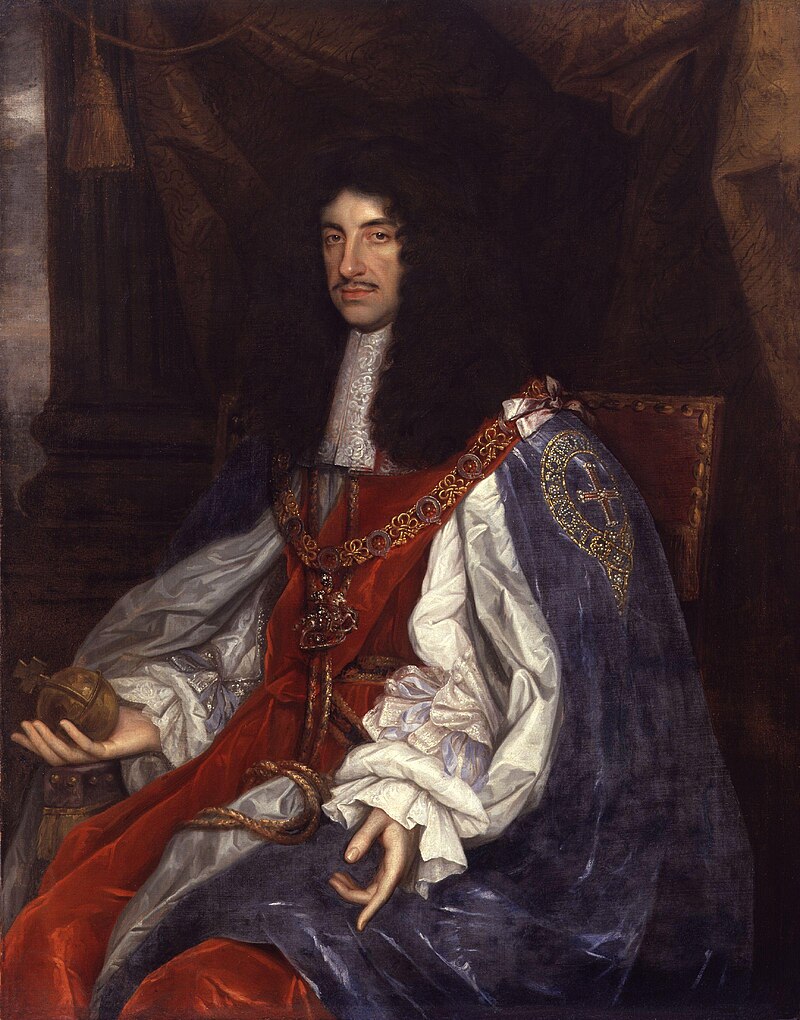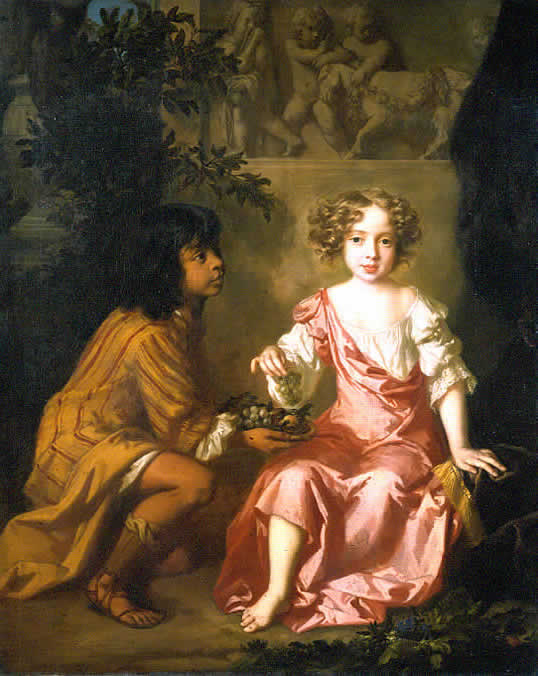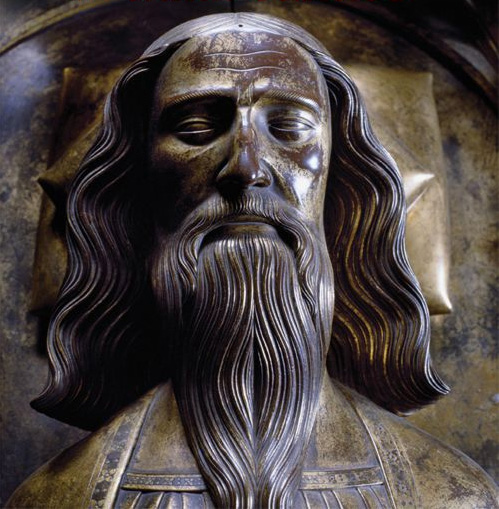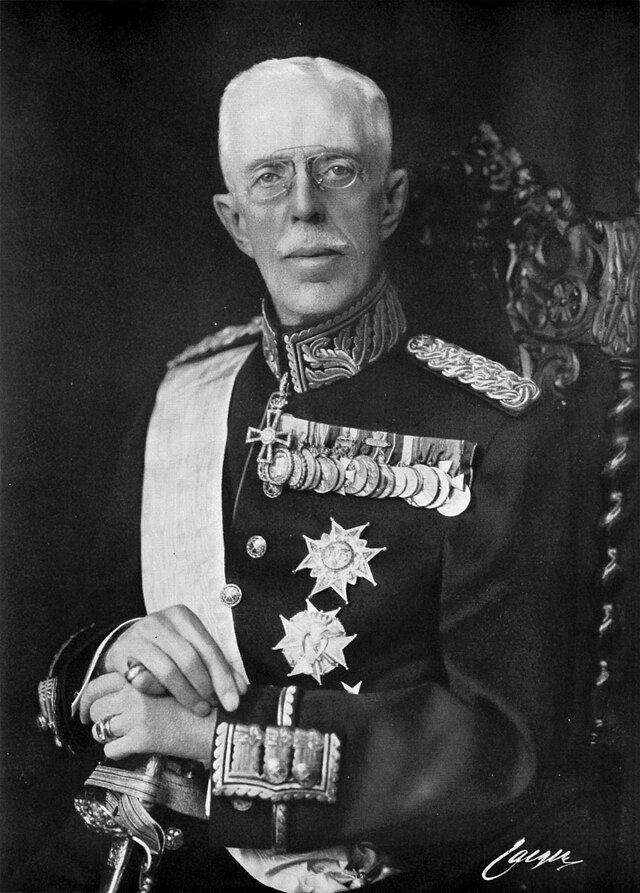by Susan Flantzer
© Unofficial Royalty 2024

Lady Charlotte Fitzroy (Charlotte Lee, Countess of Lichfield); By Godfrey Kneller – Art UK, Public Domain, https://commons.wikimedia.org/w/index.php?curid=36062608
(Not to be confused with her half-sister Charlotte FitzRoy, Charlotte Paston, Countess of Yarmouth, illegitimate daughter of King Charles II and Elizabeth Killigrew.)
Despite fathering many illegitimate children with his mistresses, King Charles II of England had no children with his wife Catherine of Braganza. Charles II is an ancestor through his mistresses of many British aristocrats and of several women who married into the British Royal Family. Lucy Walter and Charles II are ancestors of Sarah, Duchess of York and Princess Alice, Duchess of Gloucester. Barbara Palmer, 1st Duchess of Cleveland and Charles II are ancestors of Diana, Princess of Wales and Sarah, Duchess of York. Louise Renée de Penancoet de Kérouaille, Duchess of Portsmouth and Charles II are ancestors of Diana, Princess of Wales, Queen Camilla, and Sarah, Duchess of York.

King Charles II of England; Credit – Wikipedia
Also known by her married name Charlotte Lee, Countess of Lichfield, Lady Charlotte Fitzroy was born in London, England on September 5, 1664, the illegitimate daughter of King Charles II of England and and one of his mistresses, Barbara Palmer, 1st Duchess of Cleveland in her own right. The surname FitzRoy comes from the Anglo-Norman Fitz, meaning “son of” and Roy, meaning “king”, implying the original bearer of the surname was a child of a king. Charlotte’s paternal grandparents were King Charles I of England and Henrietta Maria of France (the daughter of King Henri IV of France and his second wife Marie de’ Medici). Her maternal grandparents were William Villiers, 2nd Viscount Grandison and Mary Bayning.

Charlotte’s mother Barbara Palmer, 1st Duchess of Cleveland; Credit – Wikipedia
Charlotte’s mother was born in 1640 as Barbara Villiers, the only child of William Villiers, 2nd Viscount Grandison and Mary Bayning. In 1643, Barbara’s father died in the First English Civil War, leaving his 18-year-old widow and his three-year-old daughter in financial difficulty. Barbara’s mother soon married Charles Villiers, 2nd Earl of Anglesey, her late husband’s cousin. The marriage was childless and Barbara’s stepfather died from smallpox in 1661. Barbara was considered one of the most beautiful of the young Royalist women but her lack of a dowry did not help her marriage prospects. In 1659, Barbara married the Roman Catholic Roger Palmer, later 1st Earl of Castlemaine, against his family’s wishes. In 1660, Barbara became King Charles II’s mistress.
Besides Charlotte, Barbara gave birth to five other children and it is surmised that they were all the children of King Charles II. Through their children, Barbara Palmer and King Charles II are the ancestors of Diana, Princess of Wales and Sarah, Duchess of York, and their children Prince William, Prince Harry, Princess Beatrice, and Princess Eugenie. As a reward for Barbara’s services, Charles II created Roger Palmer Earl of Castlemaine in 1661.
The children of Barbara Palmer, probably the children of King Charles II, and therefore, probably the full siblings of Charlotte:
- Lady Anne FitzRoy (1661 – 1721), married Thomas Lennard, 15th Baron Dacre, 1st Earl of Sussex, had four children
- Charles Fitzroy, 2nd Duke of Cleveland, 1st Duke of Southampton (1662 – 1730), married (1) Mary Wood, no children (2) Anne Pulteney, had six children
- Henry Fitzroy, 1st Duke of Grafton (1663 – 1690), married Isabella Bennet, 2nd Countess of Arlington in her own right, had one son
- George FitzRoy, 1st Duke of Northumberland (1665–1716), married (1) Catherine Wheatley, no children (2) Mary Dutton, no children
- Barbara FitzRoy (1672–1737), unmarried but had an illegitimate son; she became a nun taking the name Sister Benedicta; her mother claimed that she was Charles II’s daughter but she was may have been the child of her mother’s second cousin and lover John Churchill, later 1st Duke of Marlborough

Charlotte Fitzroy By Peter Lely; Credit – http://www.nationalarchives.gov.uk/pathways/blackhistory/intro/docs/lely.htm, Public Domain, https://commons.wikimedia.org/w/index.php?curid=73343860
Charlotte was raised by a governess at Berkshire House, her mother’s home in London, after 1670 known as Cleveland House, and now known as Bridgewater House. She was the favorite niece of her paternal uncle James, Duke of York, later King James II of England. Very little is known of her childhood. The 19th-century historian John Heneage Jesse wrote, “We know but little of her except that she was beautiful.” Charlotte was the subject of a painting (above) by Sir Peter Lely, King Charles II’s Principal Painter in Ordinary. She is seated with her Indian page, dressed in pink, holding a bunch of grapes.

Charlotte Fitzroy and her husband Edward Henry Lee, 1st Earl of Lichfield, as children; Credit – Wikipedia
Four months before her tenth birthday, on May 16, 1674, Charlotte was betrothed to eleven-year-old Edward Lee, the son and heir of Sir Francis Henry Lee, 4th Baronet of Quarendon and Lady Elizabeth Pope. At the time of the betrothal, Edward was created 1st Earl Lichfield with the subsidiary titles Viscount Quarendon and Baron Spelsbur. In 1676, Charlotte’s mother took her to France where she was educated in a convent for a year. She returned to England the following year and having reached puberty, thirteen-year-old Charlotte and fourteen-year-old Edward were married on February 6, 1677.
Charlotte and Edward had eighteen children and eleven survived childhood:
- Lady Charlotte Lee (1678 – 1721), married (1) Benedict Calvert, 4th Baron Baltimore, had six children (2) Christopher Crowe, had four children
- Charles Lee, Viscount Quarendon (born and died 1680), died in infancy
- Edward Henry Lee, Viscount Quarendon (1681 – 1713), unmarried
- Captain The Honorable James Lee (1682 – 1711), unmarried
- The Honorable Francis Lee (born and died 1685), died in infancy
- Lady Anne Lee (1686 – 1716?), unmarried
- The Honorable Charles Lee (1688 – 1708), unmarried
- George Henry Lee, 2nd Earl of Lichfield (1690 – 1743), married Frances Hales, had three sons and five daughters
- The Honorable Francis Henry Fitzroy Lee (1692 – 1730), unmarried
- Lady Elizabeth Lee (1693 – 1741), married (1) Francis Lee, a cousin, had one son and two daughters (2) Edward Young, had one son
- Lady Barbara Lee (1695 – 1729), married Sir George Browne, 3rd Baronet of Kiddington, had one daughter
- Lady Mary Isabella Lee (born and died 1697)
- The Honorable Fitzroy Lee (1698 – ?), died young
- Vice Admiral The Honorable FitzRoy Henry Lee (1700 – 1751), unmarried
- The Honorable William Lee (1701 – ?), died young
- The Honorable Thomas Lee (1703 – ?), died young
- The Honorable John Lee (1704 – ?), died young
- Robert Lee, 4th Earl of Lichfield (1706 – 1776), married Catherine Stonhouse, no children

Edward Lee, 1st Earl of Lichfield; By Godfrey Kneller – http://www.askart.com/AskART/photos/COL20070427_3851/26.jpg, Public Domain, https://commons.wikimedia.org/w/index.php?curid=3836410
Charlotte and Edward lived at the Lee family estate in Ditchley, Oxfordshire, England. Edward was Lord Lieutenant of Oxfordshire from 1687 – 1689. He commanded Lichfield’s Regiment (now known as the Suffolk Regiment), an infantry regiment in the English Army, until his dismissal following the 1688 Glorious Revolution for his support of Charlotte’s paternal uncle, the overthrown King James II. Charlotte’s first cousins and husband and wife William III, Prince of Orange and Princess Mary of England, the elder of the two daughters of King James II, overthrew King James II and reigned England jointly as King William III and Queen Mary II.
Both Charlotte and Edward were staunch Jacobites, whose goal was to restore the Roman Catholic Stuart King James II of England/VII of Scotland and his Roman Catholic heirs to the thrones of England and Scotland. Edward played a prominent role during the Williamite War (1689 – 1691) in Ireland when supporters of the former King James II unsuccessfully attempted to retake the English throne from King William III and Queen Mary II. In 1702, Charlotte asked her first cousin Queen Anne, the younger daughter of King James II, if she could come to court, and was told not until her husband swore an oath of loyalty to Queen Anne, which he refused to do.

All Saints Church in Spelsbury, Oxfordshire, England where Charlotte and her husband are buried in the churchyard; By neil hanson, CC BY-SA 2.0, https://commons.wikimedia.org/w/index.php?curid=9112137
Charlotte’s husband Edward Lee, 1st Earl Lichfield died on July 14, 1716, aged 53 in London, England, and was buried in the churchyard at All Saints Church in Spelsbury, Oxfordshire, England. Less than two years later, Charlotte died in London, England on February 17, 1718, aged 53, and was buried with her husband.
This article is the intellectual property of Unofficial Royalty and is NOT TO BE COPIED, EDITED, OR POSTED IN ANY FORM ON ANOTHER WEBSITE under any circumstances. It is permissible to use a link that directs to Unofficial Royalty.
Works Cited
- Beauclerk-Dewar, Peter & Powell, Roger. (2006). Right Royal Bastards – The Fruits of Passion. Burke’s Peerage & Gentry LLC.
- Charlotte Lee, Countess of Lichfield. geni_family_tree. (2022, April 26). https://www.geni.com/people/Charlotte-Lee-Countess-of-Lichfield/5326648104210121832
- Charlotte Lee, Countess of Lichfield. (2024). In Wikipedia. https://en.wikipedia.org/wiki/Charlotte_Lee,_Countess_of_Lichfield
- Edward Lee, 1st Earl of Lichfield. (2023). In Wikipedia. https://en.wikipedia.org/wiki/Edward_Lee,_1st_Earl_of_Lichfield
- Flantzer, Susan. (2020). Barbara Palmer, 1st Duchess of Cleveland, Mistress of King Charles II of England. Unofficial Royalty. https://www.unofficialroyalty.com/barbara-palmer-1st-duchess-of-cleveland-mistress-of-king-charles-ii-of-england/
- Flantzer, Susan. (2016). King Charles II of England. Unofficial Royalty. https://www.unofficialroyalty.com/king-charles-ii-of-england/
- Fraser, Antonia. (2002). King Charles II. Phoenix.
- Weir, Alison. (2008). Britain’s Royal Families – The Complete Genealogy. Vintage Books.









